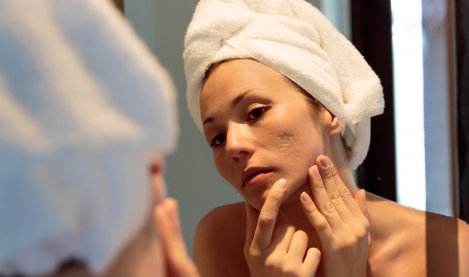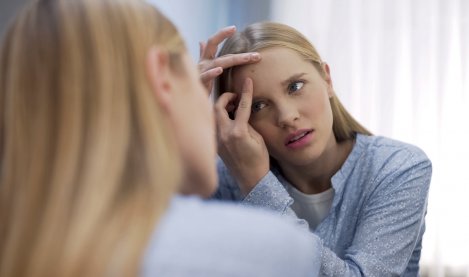Many female patients have always had pimples since adolescence while for others, the problem developed later on in life. Other women had adolescent acne that disappeared but has recurred in adulthood. In parallel, the manifestations of acne change over time: different types of blemishes develop in adulthood and adolescence and they are not necessarily found on the same areas of the body.
What are the characteristics of adult acne in women, how is it different from adolescent acne, is it hormonal acne, is it a modern-day disease, and most importantly, how does it affect self-image? According to a talk by Dr Sandra Ly.
The characteristics of adult acne in women
Between 14% and 54% of adult women are affected.
This is persistent acne, meaning it started during adolescence in 80% of cases. Its prevalence varies depending on the age group: 35% of cases occur around 30 years of age, 26% around 40, and cases decrease after 50. The average age of patients consulting for acne increased from 20.5 in 1984 to 26.5 in 1994, showing a true increase in frequency.
Dréno B. Treatment of adult female acne: a new challenge. JEADV 2015; 29 (Suppl. 5): 14-19
Dréno B. et al. Large-scale international study enhances understanding of an emerging acne population: adult females. J Eur Acad Dermatol Venereol. 2014 Oct 8. doi: 10.1111/jdv.12757.
How is it different from adolescent acne?
Acne in adult women has traditionally been considered as inflammatory acne with a few papulo-nodules occurring predominantly on the lower face.
A prospective multi-centre study conducted by B. Dréno showed that this mandibular acne was only observed in 11% of cases. In 90% of cases, it was mixed acne with a comedonal and inflammatory “adolescent profile”, affecting all facial areas and also occurring on the back in nearly 50% of cases.
Post-inflammatory hyper-pigmentation and acne scars occurred in 50% and 60% of cases, respectively.
Source: Preneau S., Dréno B.: Female acne – a different subtype of teenager acne? JEADV 2012; 26: 277-282
Is this hormonal acne?
While hyperseborrhoea is very often observed, occurring in more than 70% of cases, signs of hyperandrogenism (excessive levels of male hormones), with alopecia (hair loss), hirsutism (excessive hair growth) or acanthosis nigricans (skin pigmentation and thickening in body folds) only occur in 10% of cases. In 80% of cases, women’s cycles are regular, but 65% to 78% of women surveyed indicated their acne worsened prior to menstruation. Hormone levels are usually normal, aside from a slight increase in DHEAS, unless combined with hirsutism.
In short, this is a peripheral hormonal skin disease involving keratinocytes and sebocytes, as well as dysseborrhoea and chronic innate immune system activation via Cutibacterium acnes.
Is this acne a phenomenon of modern times?
A recent Italian multi-centre case-control study focused on the risk factors associated with acne in adult women.
- Among these risk factors, the most “powerful” were: family history, adolescent acne, and presence of hirsutism.
- Factors of modern life included high or very high levels of stress as well as a diet low in fruits, vegetables and fish. However, being a smoker or having smoked in the past was not a risk factor linked to adult acne in this study.
Source: Di Landro et al. Adult female acne and associated risk factors: Results of a multicenter case-control study in Italy J Am Acad Dermatol 2016; 75:1134-41





